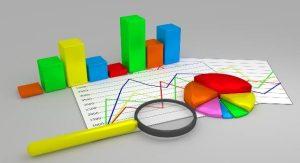How Will Statistical Analysis Be In The Future
Statistical Analysis:
The Next Step In Your Business Analytics Journey
You know that data analytics is the process of collecting and analyzing data in order to make a business decision. It’s also a way to gain insight into how your business is functioning, what needs improvement, and what opportunities are available to you. But statistical analysis goes further: It’s the next step in your data analytics journey.
Introduction: What is statistical analysis?
When it comes to business analytics, statistical analysis is the next logical step in your journey. By definition, statistical analysis is a process of collecting, cleaning, and modeling data to draw meaningful conclusions from it. In other words, it’s all about making sense of the numbers.
There are many different types of statistical analyses, but they all share one common goal: to help you better understand your data so you can make more informed decisions. The most popular methods include regression analysis, time series analysis, and correlation analysis.
Statistical analysis can be used to answer all sorts of important questions, such as: How effective was our marketing campaign? Is our product selling well in certain regions? What demographic group is most likely to purchase our product?
If you’re looking to take your business analytics to the next level, statistical analysis is the way to go.
Types of Statistical Analysis
There are four main types of statistical analysis: descriptive, inferential, predictive, and prescriptive.
Descriptive statistics are used to describe the data set that you are working with. They give you information about the shape of the data, the central tendency, the dispersion, and other features.
Inferential statistics are used to make predictions or inferences about a population based on a sample. This is what we typically think of when we think of statistical analysis. We take a sample from the population and use it to make an inference about the population as a whole.
Predictive statistics are used to predict future events. This can be done using regression analysis or time series analysis.
Prescriptive statistics are used to prescribe a course of action. This type of statistical analysis tells you what you should do in order to achieve a desired outcome.
Standard data collection
As your business grows, you will need to collect more data in order to make accurate decisions. Standard data collection methods include surveys, interviews, focus groups, and observational studies.
Surveys are a common method of collecting data. They can be administered in person, by mail, or online. Surveys are typically used to collect demographic information, opinions, and preferences.
Interviews are another common method of data collection. They can be conducted in person or over the phone. Interviews are often used to collect detailed information about a specific topic.
Focus groups are small groups of people who discuss a topic together. Focus groups can be used to generate new ideas or to get feedback on existing ideas.
Observational studies involve observing people and their behavior. Observational studies can be useful for understanding how people interact with products or services.
Data entry and coding for statistical analysis
Data entry and coding for statistical analysis is the process of converting data into a format that can be analyzed by a computer. This can be done manually or through automated means. The process of data entry and coding can be time-consuming, but it is essential for statistical analysis.
There are several steps involved in data entry and coding for statistical analysis. First, the data must be collected. This can be done through surveys, interviews, focus groups, or other means. Once the data is collected, it must be coded. Coding is the process of assigning a code to each piece of data. This helps to make the data more organized and easier to analyze.
Once the data is coded, it can be entered into a statistical software program. This program will analyze the data and provide results. The results of the analysis can help businesses make better decisions about their products, services, or marketing campaigns.
Statistical software programs used in statistical analysis
Statistical software programs are used in statistical analysis to analyze data and make predictions. There are many different types of statistical software programs, each with its own advantages and disadvantages.
The most popular type of statistical software program is the spreadsheet program. Spreadsheet programs are easy to use and allow users to manipulate data in a variety of ways. However, they are not as powerful as some of the other statistical software programs available.
Another type of statistical software program is the database management system. Database management systems are more powerful than spreadsheet programs and can handle large amounts of data. However, they can be more difficult to use and may require more training for users.
Finally, there are stand-alone statistical software programs that can be used for specific tasks. Stand-alone programs may be more expensive than other types of statistical software, but they can be worth the investment if they offer features that meet the specific needs of your business.
Analyzing results from the statistical analysis
After you’ve collected and cleaned your data, it’s time for statistical analysis. Statistical analysis is a process of using mathematical techniques to summarize, describe, and draw inferences from data.
There are many different types of statistical analyses, but some common ones are descriptive statistics, regression analysis, and ANOVA. Descriptive statistics summarize your data in a way that is easy to understand. Regression analysis predicts the value of one variable based on the values of other variables. ANOVA tests for differences between groups.
Statistical analysis can be used to answer questions about your data, such as:
-What is the average value of this variable?
-How much variance is there in this variable?
-Is this variable significantly different from that variable?
The results of your statistical analysis can help you to make decisions about your business. For example, if you find that a certain marketing campaign resulted in increased sales, you might decide to continue or expand that campaign. Or if you find that a new product is not selling as well as expected, you might decide to discontinue that product.
Statistical analysis is an important tool for making sense of your data and making informed decisions about your business.
Conclusion
As a business owner, it’s important to arm yourself with as much data as possible to make informed decisions about your company. Statistical analysis is one tool that can help you do just that. By understanding the basics of statistical analysis, you’ll be able to take your business analytics to the next level and make better decisions about your business.


